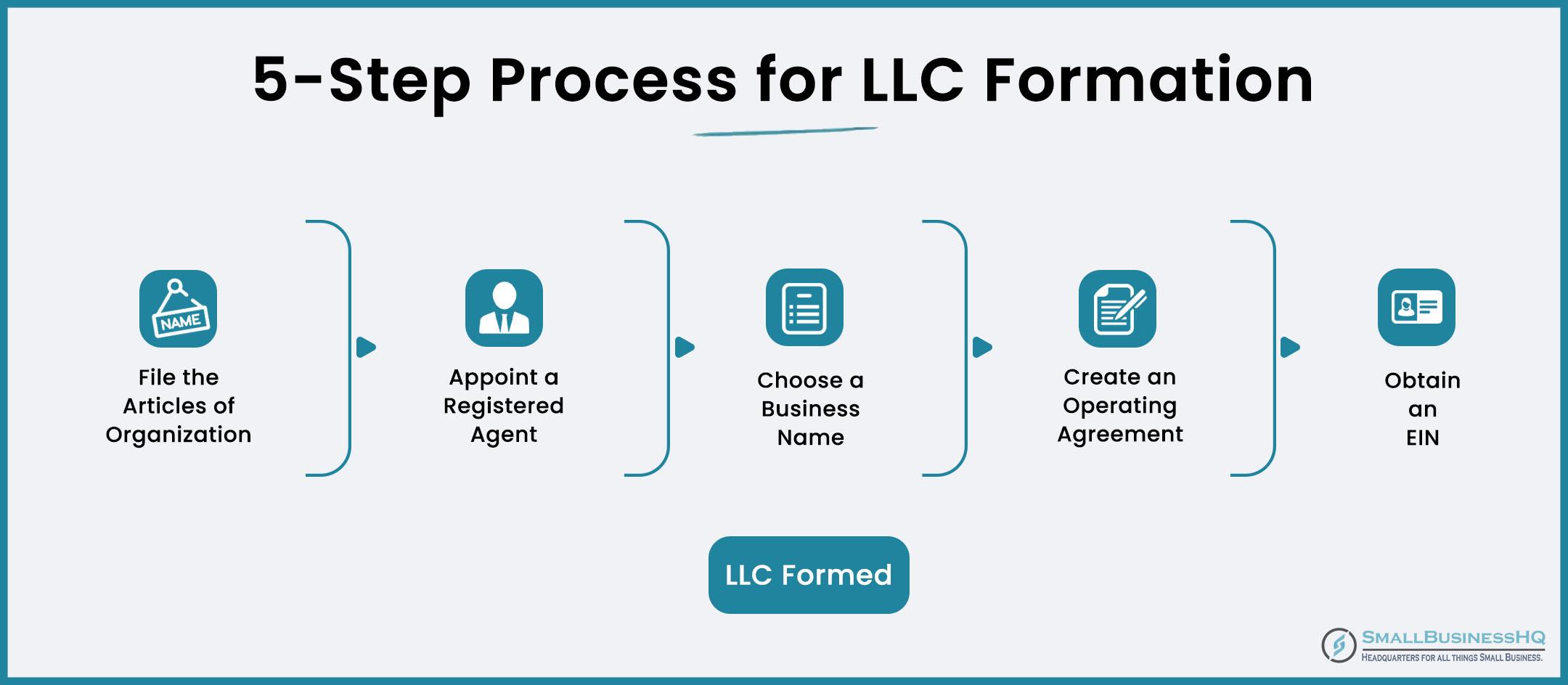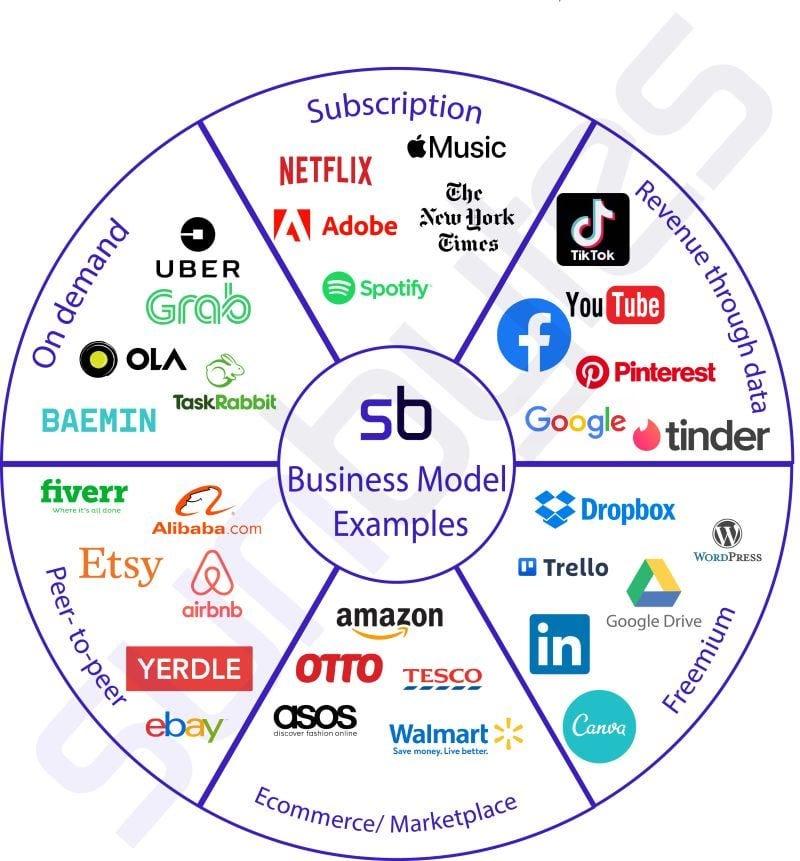
Introduction
In today’s fast-paced digital world, the allure of starting an online business has never been stronger. Whether you’re looking to turn a passion into profit or seeking a flexible side hustle, the internet has opened up a treasure trove of opportunities just waiting to be explored. But with so many options out there, how do you know which business model is the right fit for you? That’s where we come in! In this article, we’ll dive into the 9 top online business models for 2023, highlighting the most promising options that can help you achieve financial freedom and personal fulfillment. From e-commerce to affiliate marketing, each model has its unique advantages and potential for success. So, grab a cup of coffee, get comfy, and let’s uncover the best paths to online entrepreneurship together! Your future self will thank you.
Exploring the World of Online Business Models
In the vast landscape of the digital economy, online business models have taken center stage, offering entrepreneurs unique opportunities to thrive. Whether you’re a budding entrepreneur or a seasoned business owner looking to pivot, understanding these models is crucial for success. Let’s dive into some of the most promising online business models that are shaping the future of commerce.
E-commerce remains a powerhouse in the online business realm. From dropshipping to selling handmade crafts, the opportunities are endless. Entrepreneurs can set up their online storefronts through platforms like Shopify or Etsy, allowing them to reach a global audience. With the rise of social media shopping, integrating e-commerce with platforms like Instagram can further enhance visibility and sales.
Subscription services have gained immense popularity in recent years. Businesses like Netflix and Spotify have set the standard, proving that people are willing to pay for curated content and convenience. Think beyond just entertainment—consider subscription boxes for niche markets, such as beauty products, fitness gear, or gourmet snacks. This model fosters recurring revenue, creating a steady income stream for businesses.
Affiliate marketing is another model worth exploring. By promoting other companies’ products, you can earn a commission on sales generated through your referral. This model requires minimal upfront investment and can be done through blogs, social media, or YouTube channels. Building a strong online presence and credibility can lead to substantial income without the need to handle inventory or customer service.
For those with expertise in specific domains, online courses and coaching offer a lucrative avenue. Platforms like Teachable and Udemy make it easy to share knowledge with a global audience. By creating valuable content that addresses specific needs, you can turn your passion into a profitable business. Personalized coaching sessions can also attract clients looking for tailored guidance.
| Business Model | Pros | Cons |
|---|---|---|
| E-commerce | Global reach, scalable | High competition, inventory management |
| Subscription Services | Recurring revenue, loyal customers | Retention challenges, market saturation |
| Affiliate Marketing | Low startup costs, flexibility | Dependency on traffic, income variability |
| Online Courses/Coaching | High profit margins, scalable | Time-consuming content creation, initial trust-building |
Digital products such as eBooks, software, and printables also present a fantastic opportunity. Once created, these products can be sold repeatedly without ongoing production costs. The key is to identify a niche with demand and provide high-quality, valuable content. Marketing digital products can be done via email newsletters, social media, or through your own website.
consider the freemium model, commonly seen in tech and SaaS companies. By offering a basic service for free while charging for premium features, you can attract users and convert them to paying customers over time. This model hinges on delivering genuine value, compelling your audience to upgrade for enhanced features.
With so many options available, the best approach is to align your chosen model with your skills, interests, and market demand. Each model has its unique advantages and challenges, but with the right strategy and execution, you can carve out a successful online business that meets your goals.
Why Choosing the Right Business Model is Crucial for Success
When embarking on the journey of starting an online business, one of the most significant decisions you’ll face is selecting the right business model. This choice shapes not only your operations but also your potential for growth and sustainability. The right model can set you on a path to success, while the wrong one may lead to frustration and stagnation.
Understanding various business models is essential, as each comes with its own set of advantages and challenges. Whether you’re looking to sell products, provide services, or create a platform for others, your model should align with your strengths, target audience, and market trends. Here are some compelling reasons why the right choice matters:
- Market Fit: A well-suited business model ensures that your offerings meet market demands effectively. It allows you to cater to your audience’s needs while maximizing profit margins.
- Sustainability: Choosing a business model that fits your operational style can mean lower overhead costs and increased efficiency. This sustainability is key to long-term success.
- Scalability: Some models are inherently more scalable than others. By picking a model that allows for growth, you set the stage for expanding your business without compromising quality.
- Risk Mitigation: Different models carry varying levels of risk. A thorough understanding helps you identify potential pitfalls and develop strategies to mitigate them.
To illustrate the impact of a well-chosen business model, consider the following table that contrasts two common approaches:
| Business Model | Advantages | Challenges |
|---|---|---|
| Subscription-Based |
|
|
| Affiliate Marketing |
|
|
Additionally, the business model you choose influences your marketing strategy and customer acquisition approach. For instance, a direct-to-consumer model requires a different marketing strategy compared to a B2B model. Understanding these differences can help you tailor your messaging and reach your audience more effectively.
In today’s rapidly evolving digital landscape, the importance of flexibility cannot be overstated. Trends change, and consumer behavior shifts; thus, your business model should allow for adaptation. This flexibility means being open to pivoting your model as needed, based on data-driven insights and market feedback.
Ultimately, investing time in selecting the right business model is not just about immediate gains but about building a foundation for future growth. It’s a decision that can define your business trajectory and impact your ability to thrive in a competitive environment. Choosing wisely can turn your entrepreneurial dreams into reality.
Ecommerce: Building Your Brand in the Digital Marketplace
In today’s digital landscape, building a brand that stands out in the crowded ecommerce marketplace is more crucial than ever. With numerous online business models to choose from, entrepreneurs must carefully consider which approach aligns with their brand vision and customer needs. Here are some of the most promising options to help you carve out your niche.
Dropshipping has gained immense popularity due to its low barrier to entry. This model allows you to sell products without holding inventory. When a customer makes a purchase, the item is shipped directly from the supplier. This means you can focus on marketing and customer service while minimizing financial risk. Some key advantages include:
- Low startup costs
- Flexible location
- Wide product selection
Another effective model is Print on Demand (POD), enabling you to sell customized products without upfront inventory costs. You can create unique designs for items like t-shirts, mugs, and art prints. The best part? You only pay for the product once it’s sold. Consider these benefits:
- Creative control over designs
- No need for warehousing
- Ability to test new ideas quickly
For those with a knack for sourcing quality goods, Wholesale is a time-tested model. You purchase products in bulk from manufacturers or distributors at a lower price and sell them at a higher retail price. This can lead to significant profit margins, especially if you establish strong relationships with suppliers. Key considerations for wholesale include:
- Higher initial investment
- Potential for bulk discounts
- Stronger brand authority through quality products
Subscription services are also on the rise, tapping into the growing consumer trend for convenience and curated experiences. By offering products or services on a recurring basis, you create consistent revenue and foster brand loyalty. This model works well in various niches, from beauty boxes to meal kits. Here’s why it’s worth considering:
- Predictable revenue streams
- Engaged customer base
- Opportunities for upselling and cross-selling
Lastly, leveraging Affiliate Marketing can be a powerful way to expand your brand’s reach without the hassle of creating your own products. By promoting other companies’ products and earning a commission for each sale, you can create an additional revenue stream with minimal effort. Here’s what makes affiliate marketing appealing:
- Low startup costs
- No inventory management
- Scalability through diversified partnerships
With the right online business model, you can effectively build your brand in the digital marketplace. Remember, each model has its unique advantages and challenges. It’s essential to choose one that resonates with your vision and allows you to connect authentically with your target audience.
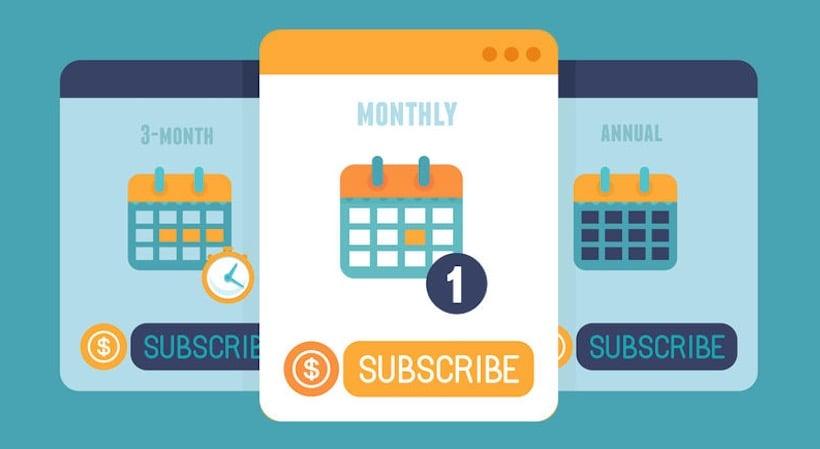
Subscription Services: A Reliable Revenue Stream
Subscription services have rapidly emerged as a cornerstone for generating consistent revenue in the digital marketplace. The appeal lies in their ability to create predictable income streams while fostering a loyal customer base. This model eliminates the uncertainty tied to one-time purchases, allowing businesses to forecast earnings and plan investments with greater confidence.
One of the most significant advantages of subscription services is the ability to build customer loyalty. By creating a sense of community and offering ongoing value, businesses can engage customers beyond the initial purchase. This relationship can transform casual users into dedicated fans who are less likely to switch to competitors. Here are a few key elements that enhance customer loyalty:
- Personalization: Tailoring offerings to meet individual preferences.
- Exclusive content: Providing subscribers with unique access to products or services.
- Customer feedback: Actively involving subscribers in shaping future offerings.
Moreover, subscription services allow for scalability. As your customer base grows, so does your revenue potential. Unlike traditional sales models, where success is tied to individual transactions, subscriptions enable businesses to scale efficiently. For instance, an online streaming service can add thousands of subscribers without incurring significant additional costs. This scalability is particularly beneficial in the digital age, where reaching global audiences is more achievable than ever.
Many successful subscription businesses have harnessed the power of tiered pricing structures. This approach allows companies to cater to a diverse audience by offering multiple subscription levels, each with varying features and price points. Here’s a simple example of how tiered pricing can be structured:
| Tier | Monthly Price | Features |
|---|---|---|
| Basic | $9.99 | Access to basic content |
| Standard | $14.99 | All basic features + exclusive content |
| Premium | $19.99 | All standard features + offline access |
Additionally, subscription models can streamline cash flow management. By receiving payments at regular intervals, companies can better manage operational costs and invest in growth initiatives. This consistent revenue flow also builds a financial cushion, allowing for reinvestment into product development, marketing campaigns, or enhancing customer service.
subscription services are not limited to just products; they can also encompass services and experiences. From fitness programs and meal kits to digital content platforms, the breadth of possibilities is vast. This flexibility allows entrepreneurs to innovate continuously and adapt to changing market demands, ensuring they remain relevant and competitive.
In essence, subscription services represent a powerful business model that not only boosts revenue but also cultivates customer relationships. By leveraging this approach, companies can enjoy long-term success and resilience in an ever-evolving digital landscape.

Affiliate Marketing: Earning Passive Income Through Partnerships
Imagine earning money while you sleep. Sounds dreamy, right? That’s exactly what affiliate marketing offers—a chance to generate passive income through partnerships with brands and companies. By promoting products or services through your unique affiliate links, you can earn commissions without ever handling the products yourself.
One of the best parts about this model is its accessibility. You don’t need a huge following to start; even a small but engaged audience can lead to substantial earnings. Here’s how to get started:
- Choose Your Niche: Focus on a specific area that interests you and aligns with your audience’s preferences.
- Research Affiliate Programs: Look for reputable programs with products that resonate with your niche.
- Create Quality Content: Develop blogs, videos, or social media posts that naturally incorporate your affiliate links.
- Engage Your Audience: Build trust by sharing honest reviews and helpful information about the products.
Let’s break this down a bit more. Choosing the right niche is crucial; it will dictate your content and the type of products you promote. Focus on areas where you’re passionate, and that have a market demand. This will not only keep you motivated but also help you connect better with your audience.
Next, when selecting affiliate programs, consider their commission rates, payment structures, and the reputation of the brands. Many companies offer attractive incentives for affiliates, so don’t hesitate to compare your options. Platforms like Amazon Associates, ShareASale, and CJ Affiliate offer a wide range of products across various categories.
Creating quality content is your chance to shine. Whether through blog posts, YouTube videos, or social media, provide value to your audience. Share personal experiences, tutorials, and informative articles that incorporate your affiliate links seamlessly. Authenticity goes a long way in building trust and encouraging clicks on your links.
Lastly, engaging your audience is vital. Use social media to interact, ask questions, and respond to comments. This two-way communication fosters a community around your content, increasing the likelihood that your followers will check out your recommendations.
To further illustrate the potential of affiliate marketing, here’s a simple table demonstrating potential earnings based on commission rates:
| Product Price | Commission Rate | Potential Earnings |
|---|---|---|
| $50 | 10% | $5 |
| $200 | 15% | $30 |
| $500 | 20% | $100 |
As you can see, even a few sales can add up quickly, especially if you diversify your products and promotions. With persistent effort and a strategic approach, affiliate marketing can become a reliable source of passive income, allowing you to enjoy the benefits of your hard work while focusing on other ventures.

Online Courses and Coaching: Sharing Knowledge for Profit
In today’s digital landscape, online courses and coaching have emerged as powerful avenues for sharing knowledge while generating profit. With the rise of remote learning, the demand for expertise in various fields has never been higher. Whether you’re a seasoned educator or a passionate professional, this business model allows you to monetize your skills and knowledge effectively.
Creating an online course is not just about sharing what you know; it’s about packaging your expertise in a way that resonates with your audience. Here are some compelling reasons why this model is thriving:
- Flexibility: Online courses can be consumed at any time, allowing learners to fit education into their schedules.
- Scalability: Once created, an online course can be sold to countless students without additional effort.
- Global Reach: You are not limited to local markets; your knowledge can impact students around the world.
- Passive Income: After the initial effort of course creation, you can earn money while you sleep.
For those who prefer a more personalized approach, coaching can be a highly lucrative option. Here, you can leverage your unique insights to guide individuals or businesses through challenges, helping them achieve specific goals. The coaching model thrives on personal interaction and tailored advice, which adds significant value. You can choose to focus on various specialties, such as:
- Business Coaching: Helping entrepreneurs scale their businesses.
- Life Coaching: Supporting individuals in personal development and achieving life goals.
- Health Coaching: Guiding clients toward better health and wellness.
- Career Coaching: Assisting with job searches, resumes, and interview preparation.
Both online courses and coaching require effective marketing strategies to reach the right audience. Here’s a quick look at the essential components you should incorporate:
| Marketing Strategy | Description |
|---|---|
| Content Marketing | Create valuable content that showcases your expertise. |
| Social Media Marketing | Engage with potential clients on platforms they frequent. |
| Email Marketing | Build a list of interested individuals and keep them informed. |
| Webinars | Offer free sessions to showcase your knowledge and attract leads. |
Ultimately, the success of your online courses or coaching practice hinges on understanding your audience’s needs. Invest time in market research to identify pain points and tailor your offerings accordingly. By building a strong personal brand and establishing trust with your audience, you can create a loyal following that not only benefits from your knowledge but also becomes your advocates.
Embracing this model can transform your passion into a profitable venture, enabling you to make a meaningful impact while enjoying the freedom that comes with being an online entrepreneur.

Freelancing: Capitalizing on Your Skills and Expertise
Freelancing offers a unique opportunity to transform your skills and expertise into a profitable online business model. With the rise of remote work and digital platforms, more professionals are choosing to break free from traditional employment and leverage their talents on their own terms. Here’s how you can tap into the freelancing market effectively.
One of the most attractive aspects of freelancing is the flexibility it provides. You can choose your projects, set your schedule, and work from anywhere in the world. This freedom allows you to align your work with your passion, making it easier to stay motivated and engaged. Consider these popular freelancing fields:
- Writing and Editing: From blog posts to technical manuals, there’s a high demand for content creators.
- Graphic Design: Businesses always need logos, branding, and marketing materials.
- Web Development: As companies shift online, skilled developers are essential for building and maintaining websites.
- Digital Marketing: Help brands grow their online presence through SEO, social media, and email campaigns.
To succeed in freelancing, it’s crucial to build a strong personal brand. This means showcasing your skills through a well-designed portfolio, engaging on social media, and establishing a professional website. Here’s a simple table to help you outline essential elements of your personal brand:
| Element | Description |
|---|---|
| Portfolio | A collection of your best work that demonstrates your expertise. |
| Website | Your online hub for services, testimonials, and contact information. |
| Social Media | Platforms to engage with potential clients and showcase your personality. |
| Networking | Connecting with others in your field to find opportunities and collaborations. |
Another vital aspect of freelancing is finding clients. Start by leveraging existing networks, reaching out to past colleagues, or using platforms like Upwork and Fiverr. Don’t underestimate the power of word-of-mouth and referrals. Offering exceptional service will encourage clients to recommend you to others.
Additionally, make sure to set competitive rates that reflect your expertise. Research what others in your field are charging and consider your unique value proposition. Remember, pricing your services too low can undermine your skills and the market as a whole.
Lastly, never stop learning. The digital landscape is ever-evolving, and staying updated with the latest trends and skills will keep you relevant. Invest time in online courses, webinars, and workshops to enhance your knowledge and expand your service offerings.

Content Creation: Turning Passion into Profit
In today’s digital landscape, the opportunity to transform your passions into a thriving business has never been more accessible. Content creation allows individuals to express their interests while monetizing their skills, leading to a fulfilling career that resonates with their values.
Whether you love writing, photography, video production, or any other form of creative expression, there are numerous avenues to explore. Here are some of the most effective ways to turn your content into a profitable venture:
- Affiliate Marketing: Promote products or services that align with your interests and earn commissions on sales generated through your unique links.
- Online Courses: If you possess expertise in a particular area, create and sell online courses to help others learn and grow.
- YouTube Channel: Share videos on a niche topic, building a community and earning money through ads, sponsorships, and merchandise.
- Podcasting: Launch a podcast discussing your passion; monetize through sponsorships, listener donations, or premium content.
- Blogging: Write engaging articles on a subject that excites you, and monetize through ads, sponsored posts, or affiliate links.
To maximize your earnings, it’s essential to understand your audience and create content that resonates with them. Researching trends, engaging with followers, and providing valuable insights can help you build a loyal community that supports your endeavors.
One effective method to keep your content fresh and engaging is to diversify your platforms. For example, if you are a writer, you might also create videos for YouTube or start a podcast. This multi-channel approach not only broadens your reach but also allows you to connect with your audience in various ways.
Additionally, consider forming partnerships with other content creators. Collaborations can expose you to new audiences and create unique content that can enhance your brand. Think about how you can combine your strengths with someone else’s to craft something truly special.
| Business Model | Potential Earnings | Best For |
|---|---|---|
| Affiliate Marketing | Varies (up to 50% commission) | Influencers, bloggers |
| Online Courses | $20 - $200 per course | Experts, educators |
| YouTube Channel | Ads, sponsorships, merch | Video creators |
| Podcasting | $15 – $50 CPM | Storytellers, interviewers |
| Blogging | $0.01 – $0.50 per view | Writers, niche experts |
remember that success in content creation requires persistence and adaptability. Trends can change rapidly, so staying updated and being willing to pivot your strategy is crucial. Embrace the journey, and let your passion guide you as you create content that not only fulfills you but also brings in profit.
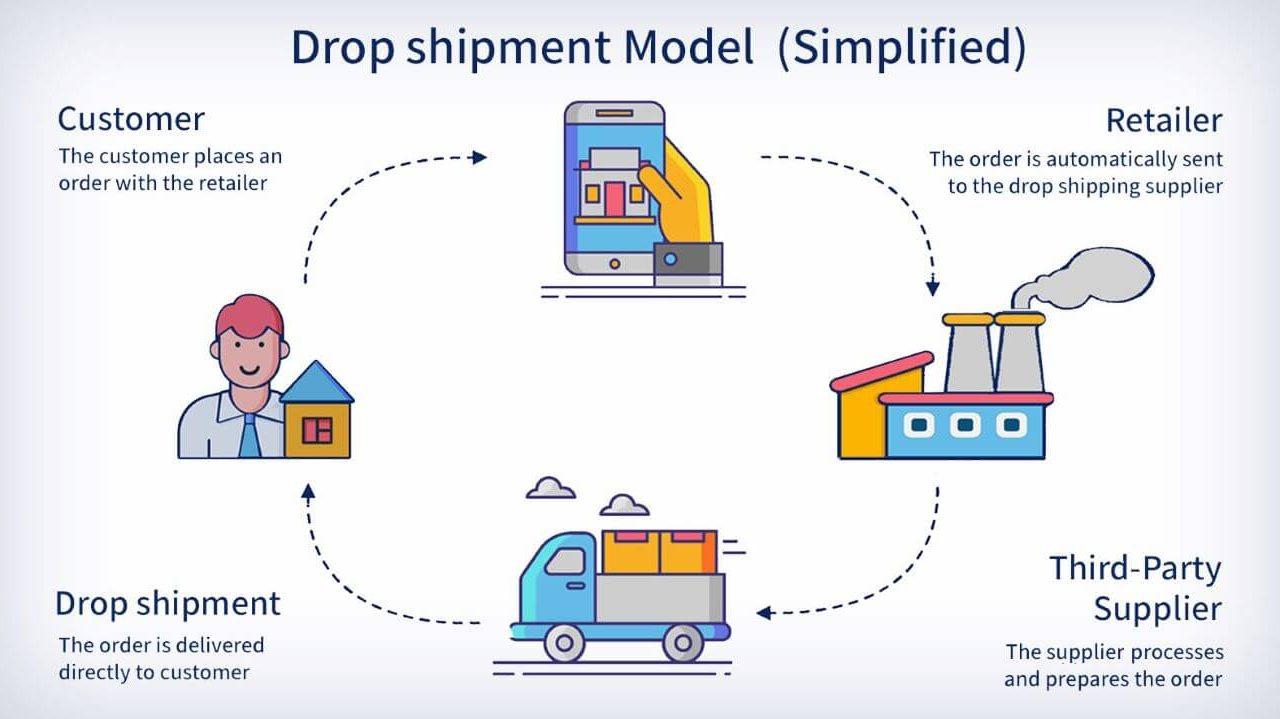
Dropshipping: Low-Risk Retailing that Works
Dropshipping has emerged as a game-changer in the retail landscape, providing aspiring entrepreneurs with a unique opportunity to enter the ecommerce realm with minimal financial risk. Unlike traditional retail models, where you’re required to hold inventory, dropshipping allows you to sell products directly from suppliers to customers without ever handling the merchandise yourself. This innovative approach not only streamlines operations but also significantly reduces overhead costs, making it an attractive option for many.
One of the most appealing aspects of dropshipping is its low upfront investment. With no need to purchase inventory in bulk, you can start your online store with a limited budget. This means that the barrier to entry is lower than ever before, allowing more individuals to explore their entrepreneurial ambitions. Here are a few reasons why dropshipping is considered a low-risk venture:
- No Inventory Costs: You only pay for products after a customer has made a purchase.
- Flexible Location: As long as you have an internet connection, you can run your business from anywhere.
- Scalability: It’s easier to scale your business without the constraints of inventory management.
- Wide Product Range: You can offer a diverse selection of products without the financial risk of unsold inventory.
Another significant advantage of this model is the ease of market entry. Most dropshipping platforms are user-friendly and provide simple integration with popular online marketplaces. This means that you can focus more on marketing and customer engagement rather than logistics. By leveraging established platforms like Shopify or WooCommerce, you can set up your online store quickly and efficiently.
Moreover, dropshipping allows for flexible niche selection. Whether you’re passionate about fashion, electronics, or eco-friendly products, you can find suppliers who cater to your specific market. This flexibility enables you to personalize your store and connect with your target audience effectively, ultimately leading to higher conversion rates.
However, it’s essential to choose reliable suppliers to ensure product quality and customer satisfaction. To help you with that, here’s a simple comparison table of some popular dropshipping suppliers:
| Supplier | Product Range | Shipping Time | Integration |
|---|---|---|---|
| Oberlo | Varied | 2-4 weeks | Shopify |
| Spocket | Local & International | 1-3 days | WooCommerce, Shopify |
| Printful | Custom Products | 2-7 days | Shopify, Etsy |
| SaleHoo | Wholesalers | Varies | Shopify, WooCommerce |
dropshipping stands out as a viable and low-risk retailing option that not only fosters creativity but also empowers individuals to build successful online businesses. With the right strategy, a keen understanding of your market, and a solid marketing approach, you can turn this model into a lucrative venture while enjoying the freedom of entrepreneurship.

Software as a Service: Developing Solutions for Today’s Challenges
In a rapidly evolving digital landscape, businesses are increasingly turning to Software as a Service (SaaS) solutions to address contemporary challenges. SaaS platforms offer flexibility, scalability, and cost-effectiveness, making them attractive options for startups and established enterprises alike. By leveraging cloud technology, these solutions enable companies to streamline operations, enhance productivity, and focus on core competencies without the burden of extensive IT infrastructure.
Here’s why SaaS is becoming essential for modern businesses:
- Accessibility: SaaS solutions are typically accessible from any device with internet connectivity, allowing teams to collaborate seamlessly regardless of their physical location.
- Cost Efficiency: With a subscription-based pricing model, businesses can significantly reduce upfront costs associated with software purchase and maintenance.
- Automatic Updates: Providers handle updates and maintenance, ensuring that users always have access to the latest features and security enhancements.
- Scalability: Companies can easily adjust their usage based on their needs, enabling them to scale up or down without significant investment in new infrastructure.
Consider how businesses are using SaaS to tackle specific issues. For instance, many organizations are adopting customer relationship management (CRM) platforms to improve customer engagement and retention rates. These tools can analyze customer data, automate marketing efforts, and provide insights that drive sales strategies.
Moreover, project management tools offered as SaaS enable teams to coordinate tasks more effectively, track progress in real-time, and improve communication across departments. This transparency minimizes the risks associated with miscommunication and enhances overall project outcomes.
SaaS models are also diversifying, catering to various industry needs:
| Industry | SaaS Solution Example | Key Benefits |
|---|---|---|
| Healthcare | Telemedicine Platforms | Improved patient access, lower costs |
| E-commerce | Online Store Builders | User-friendly setup, integrated payment processing |
| Education | Learning Management Systems | Flexible learning options, broad accessibility |
| Finance | Accounting Software | Real-time financial insights, automated reporting |
The rise of remote work has further accelerated the adoption of SaaS solutions. Companies are no longer confined to traditional office environments, and the need for tools that facilitate remote collaboration has skyrocketed. This shift not only addresses current operational challenges but also positions businesses to thrive in an increasingly digital future.
Ultimately, embracing SaaS can provide a competitive edge. Organizations that adopt these technologies can react more quickly to market changes, innovate faster, and ultimately serve their customers better. As we continue to navigate the complexities of today’s business environment, it’s clear that Software as a Service is not just a trend; it’s a transformative force that will shape the future of work.
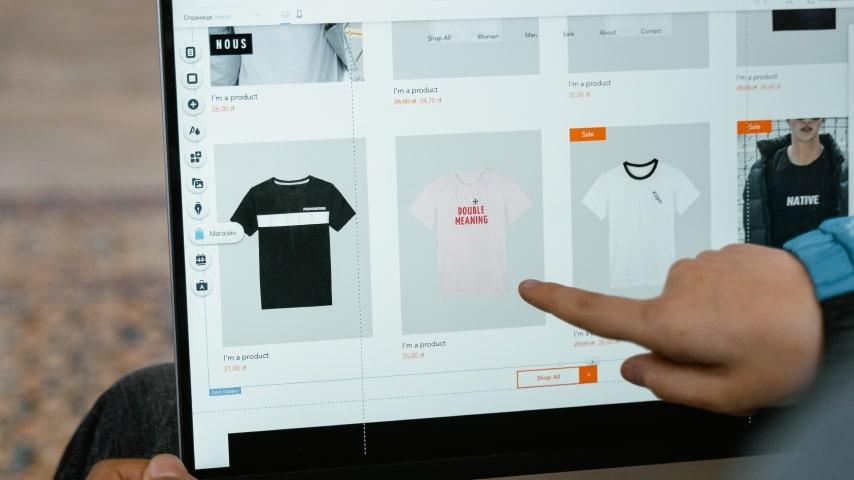
Print on Demand: Customization Meets Convenience
Print on demand (POD) is revolutionizing the way entrepreneurs approach their businesses. With this model, you can create and sell customizable products without the need for large inventories or upfront costs. The beauty of POD lies in its ability to merge creativity and convenience, offering a seamless experience for both sellers and buyers.
Imagine designing your own T-shirts, mugs, or wall art, all while having the freedom to tailor each product to individual customer preferences. This flexibility is one of the leading reasons why POD has surged in popularity. Here’s what makes this model particularly appealing:
- Low Risk: You don’t have to invest in bulk inventory. With POD, you only pay for the products once they are sold.
- Unlimited Customization: Customers can choose from various designs, colors, and styles, making each purchase unique.
- Easy Integration: Most POD services integrate seamlessly with popular e-commerce platforms, making it easy to set up your online store.
- Eco-Friendly Options: Many POD companies focus on sustainability, using eco-friendly materials and processes.
With the rise of remote work and online shopping, consumers are increasingly looking for personalized products that reflect their individual tastes. This growing demand creates a perfect environment for POD businesses. As a seller, you can capitalize on trending designs and cater to niche markets with minimal upfront investment.
Let’s take a look at some popular POD products that entrepreneurs are successfully selling:
| Product Type | Potential Market | Key Features |
|---|---|---|
| T-Shirts | Fashion Enthusiasts | Variety of styles and sizes |
| Mugs | Gift Shoppers | Customizable designs and quotes |
| Posters | Home Decorators | High-quality prints in different sizes |
| Phone Cases | Tech Savvy Users | Unique designs and durable materials |
As you venture into print on demand, effective marketing strategies will be essential to drive traffic to your store. Utilizing social media platforms, creating engaging content, and leveraging influencer partnerships can enhance visibility and boost sales. Consider sharing customer testimonials and showcasing user-generated content to build trust and foster a sense of community around your brand.
Additionally, ensure that you are continuously analyzing your sales data to identify trends and preferences. This allows you to iterate on your designs and optimize your offerings. With a keen eye on market demands and a commitment to quality, your print on demand business can thrive and adapt in today’s dynamic e-commerce landscape.

Social Media Management: Leveraging Platforms for Business Growth
In today’s digital landscape, having a robust social media presence is essential for any business aiming for growth. By strategically leveraging various platforms, businesses can amplify their reach, engage with customers, and ultimately drive sales. Social media is not just about posting updates; it’s about creating a dynamic relationship with your audience.
Understanding the unique characteristics of each platform is key. Here are some powerful ways businesses can use social media to their advantage:
- Targeted Advertising: Platforms like Facebook and Instagram offer advanced targeting options that allow you to reach specific demographics, interests, and behaviors. This means your ads are seen by those most likely to convert.
- Brand Storytelling: Use platforms like Instagram Stories and TikTok to share authentic, behind-the-scenes content that resonates with your audience. This fosters a sense of community and loyalty.
- Engagement and Customer Service: Social media serves as an effective channel for customer feedback and service. Quick responses to inquiries enhance customer satisfaction and strengthen brand image.
- Influencer Collaborations: Partnering with influencers can significantly boost your brand’s visibility. Influencers have established trust with their audiences, making their endorsements powerful.
Moreover, analytics tools available on these platforms allow businesses to track engagement and adjust strategies accordingly. Understanding what content resonates best with your audience can lead to more effective campaigns. Here’s a quick breakdown of key platforms and their strengths:
| Platform | Strengths |
|---|---|
| Wide reach, versatile ad options, community-building features. | |
| Visual storytelling, high engagement rate, popular among younger demographics. | |
| Professional networking, B2B marketing, thought leadership opportunities. | |
| Real-time updates, trending topics, direct communication with customers. |
Content should also be optimized for each platform. For instance, visually appealing content thrives on Instagram, while informative articles resonate well on LinkedIn. Adapting your message ensures that you’re speaking the language of your audience, making it more likely they’ll engage with your brand.
As you refine your social media strategies, consider integrating user-generated content. Encouraging customers to share their experiences with your product can create authentic endorsements and increase brand loyalty. Highlighting these stories on your platforms showcases real-world applications of your offerings.
remember that social media management is an ongoing process. Regularly updating your strategy based on analytics and customer feedback is crucial for sustaining growth. By continually adapting and optimizing your approach, your business can thrive in the competitive online marketplace.
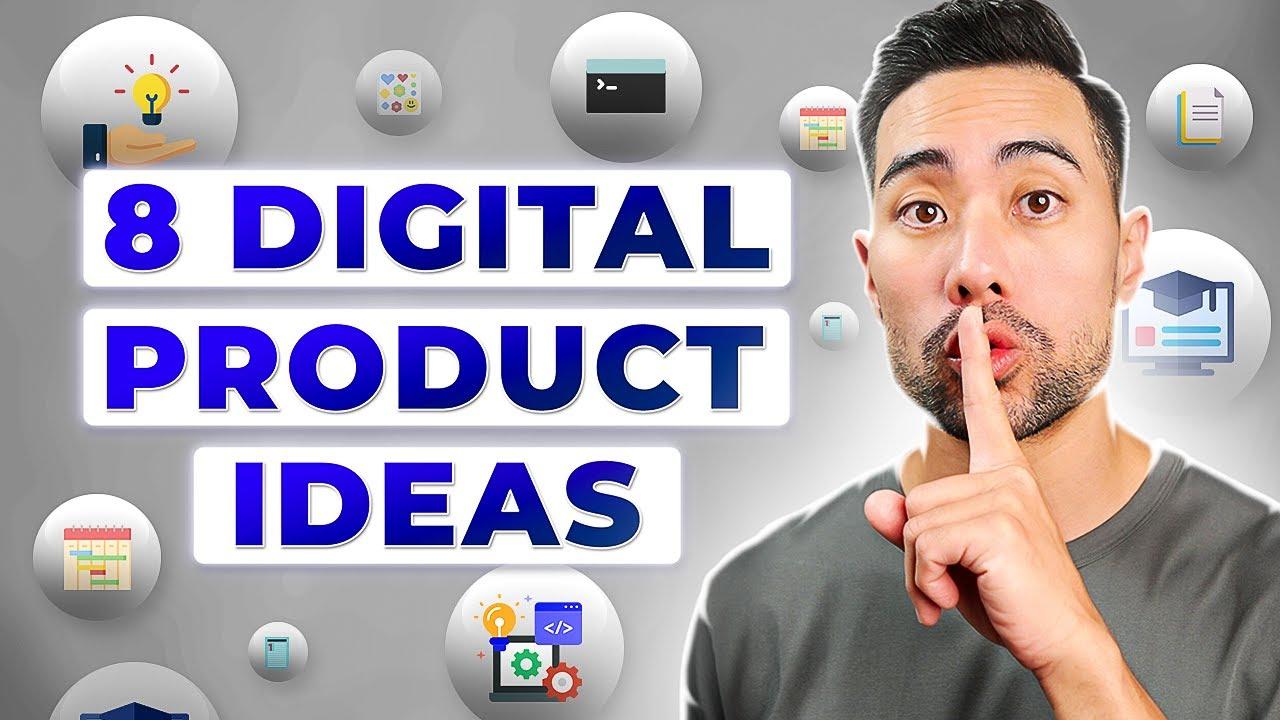
Digital Products: Creating Value Without Inventory
In today’s fast-paced digital landscape, businesses are pivoting towards digital products to streamline operations and enhance profitability. Unlike traditional physical goods, digital offerings eliminate the need for cumbersome inventory management, allowing entrepreneurs to focus on creativity and customer engagement.
Imagine creating a product that can be sold an infinite number of times without the overhead costs associated with manufacturing. Digital products can take various forms, including:
- E-books - Share your expertise and insights while generating passive income.
- Online courses - Teach skills and knowledge to eager learners around the globe.
- Software applications - Solve problems with innovative solutions that can scale effortlessly.
- Stock media – Provide high-quality images, videos, or music for content creators.
- Membership sites – Create a community and offer exclusive content for a recurring fee.
One of the most appealing aspects of selling digital products is the potential for passive income. Once the product is created and launched, the sales can continue without further involvement. This allows entrepreneurs to invest their time in developing new products or improving existing ones, amplifying their revenue streams.
Moreover, the reach of digital products is virtually limitless. With the power of the internet, you can market your offerings to a global audience, breaking down geographical barriers that traditional businesses face. Consider these strategies to enhance your digital product visibility:
- Social Media Marketing: Utilize platforms like Instagram, Facebook, and LinkedIn to showcase your products.
- Email Campaigns: Build a mailing list and engage with prospects through targeted messages.
- Affiliate Programs: Incentivize others to promote your products by offering commissions on sales.
- Content Marketing: Create valuable content that resonates with your target audience to drive traffic to your offerings.
Setting up your digital product business doesn’t have to be a daunting task. Here’s a simple overview of the steps involved:
| Step | Description |
|---|---|
| Identify Your Niche | Understand the market and select a niche that aligns with your expertise. |
| Create Your Product | Develop your digital offering while ensuring high quality and value for customers. |
| Set Up Sales Platforms | Choose e-commerce platforms or marketplaces to host and sell your products. |
| Market Your Product | Implement marketing strategies to attract and convert potential buyers. |
| Analyze and Optimize | Monitor sales performance and customer feedback to refine your offerings. |
By harnessing the power of digital products, entrepreneurs can create a sustainable business model that thrives on flexibility and innovation. With minimal upfront investment and the ability to scale, digital offerings are shaping the future of commerce and empowering creators worldwide.
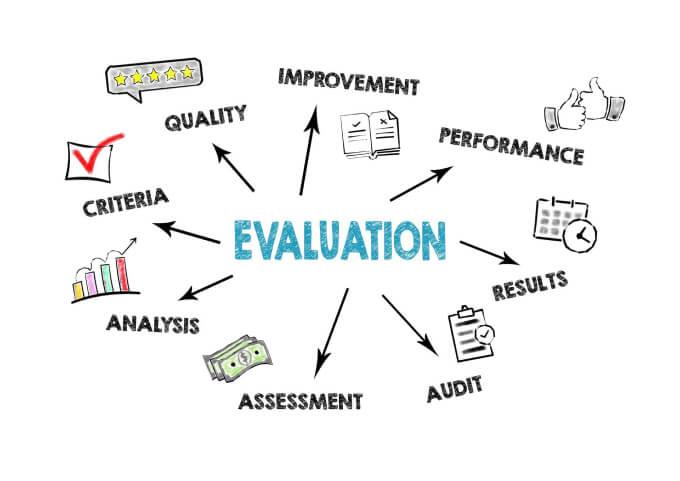
Selecting the Best Model for Your Goals and Lifestyle
When delving into the world of online business models, it’s essential to align your choice with your personal goals and lifestyle. Each model comes with unique demands, challenges, and rewards. Here are some factors to consider that can help you make an informed decision:
- Time Commitment: Assess how much time you can realistically dedicate to your business. Some models, like dropshipping, may require less time once set up, while others, like content creation, can demand continuous engagement.
- Initial Investment: Consider your budget. Affiliate marketing often requires minimal upfront costs, while e-commerce might necessitate inventory purchase and website setup.
- Skill Set: Your existing skills can influence your success. If you excel at creating engaging content, blogging or video marketing could be ideal. On the other hand, if you have a knack for sales, consider exploring e-commerce options.
- Long-term Sustainability: Look for models that not only promise quick returns but also have the potential for long-lasting success. Subscription services and membership sites can offer recurring revenue, which helps build a stable income stream.
It’s also vital to consider your passions and interests. Choosing a model that resonates with you personally can enhance your motivation and commitment. If your business aligns with what you love, you’ll be more likely to endure challenges and remain engaged over the long haul. Think about the following:
- What are your hobbies? If you love photography, an online course or digital product related to photography could be fulfilling and profitable.
- Who is your target audience? Understanding who you want to serve can help you select a model that caters to their needs effectively. For example, if you’re passionate about wellness, you might create a blog or an e-commerce site focused on health products.
Lastly, flexibility is crucial. The online business landscape is ever-changing, and models that thrive today may shift tomorrow. Keep an open mind and be prepared to pivot your approach as your market evolves and your personal circumstances change. The best model for you might not be what initially attracts you; it might be a blend of your interests and market demands.
Incorporating these considerations into your decision-making process will empower you to select a model that not only meets your financial goals but also enriches your life. Take the time to evaluate your choices carefully and choose a path that complements your lifestyle and aspirations.
Frequently Asked Questions (FAQ)
Q&A on “9 Top Online Business Models: The Most Promising Options (2023)”
Q1: What are the top online business models for 2023?
A: Great question! The top online business models for 2023 include e-commerce, subscription services, affiliate marketing, digital products, online courses, freelancing, social media influencing, dropshipping, and print on demand. Each of these models has unique advantages that cater to different markets and skill sets.
Q2: Why should I consider starting an online business this year?
A: There’s never been a better time to start an online business! The digital landscape is continuously expanding, and more consumers are shifting to online shopping and services. With the right online business model, you can tap into a global market, reduce overhead costs, and enjoy the flexibility of working from anywhere.
Q3: How does e-commerce work in 2023?
A: E-commerce involves selling products or services online directly to consumers. In 2023, it’s become more accessible with platforms like Shopify and WooCommerce, allowing anyone to set up a store with ease. Plus, trends in mobile shopping and personalized marketing are driving even more sales. If you have a product to sell, this is a model worth exploring!
Q4: What’s the deal with subscription services?
A: Subscription services offer products or services on a recurring basis, which creates a consistent revenue stream. Think of popular models like Netflix or meal kit deliveries. This model is appealing because it builds customer loyalty and allows for predictable income. It’s all about offering value that keeps customers coming back month after month!
Q5: Can you explain affiliate marketing for beginners?
A: Absolutely! Affiliate marketing is where you promote other companies’ products and earn a commission for every sale made through your referral link. It’s a fantastic way to start an online business without creating your own products. With platforms like Amazon Associates, you can easily get started with minimal upfront investment!
Q6: What are digital products, and why are they popular?
A: Digital products are non-physical goods that can be sold online, such as e-books, software, music, or stock photos. They’re popular because they have low overhead costs—no inventory or shipping required! Once created, they can be sold repeatedly, making them a great source of passive income.
Q7: How can I leverage online courses as a business model?
A: If you have expertise in a specific area, creating and selling online courses is a fantastic way to monetize your knowledge. Platforms like Udemy and Teachable make it easy to host your courses. With the growing demand for online learning, this model can be incredibly lucrative, especially if you market your courses well!
Q8: What should I know about freelancing as a business model?
A: Freelancing allows you to offer your skills and services on a project basis. Whether you’re a writer, designer, or developer, there’s a huge demand for freelance work. Websites like Upwork or Fiverr can help you connect with clients. This model offers flexibility and the potential for high earnings based on your skills.
Q9: What are the risks involved in starting an online business?
A: Like any business venture, there are risks involved, such as market competition, changing consumer preferences, and potential financial loss. However, by researching your chosen model and developing a solid business plan, you can mitigate these risks. Remember, every successful entrepreneur learns from their challenges!
Q10: How can I choose the right online business model for me?
A: Start by assessing your interests, skills, and resources. Consider what you’re passionate about and how much time or money you can invest. It’s also wise to analyze current market trends to find what’s in demand. The right model aligns with your strengths and the needs of your target audience.
Closing Remark: If you’re considering diving into the world of online business, now is the time! With so many promising options available, you can find a model that fits your lifestyle and goals. Start exploring today and take the first step towards financial freedom!
To Conclude
As we wrap up our exploration of the 9 Top Online Business Models for 2023, it’s clear that the digital landscape is brimming with opportunities. Whether you’re looking to launch a side hustle or dive headfirst into a full-time venture, there’s a model here that can align with your passions and goals.
Remember, the key to success in any online business is not just about choosing the right model, but also about how you implement it. Take the time to research, plan, and adapt your strategy to fit your unique vision. This is your chance to create something amazing, and the right online business model can be the vehicle that gets you there.
So, are you ready to take the leap? Dive into the world of online entrepreneurship and start turning your ideas into reality. The possibilities are endless, and with the right approach, you can build a business that not only thrives but also fulfills you.
Thank you for joining us on this journey through the exciting realm of online business models. Here’s to your success in 2023 and beyond!



